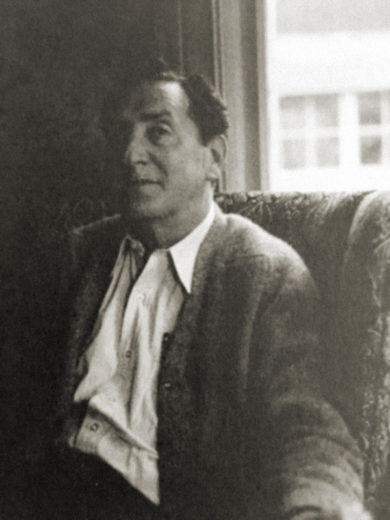There was no more significant poetry anthology in the second half of the twentieth century than The New American Poetry, 1945–1960, edited by Donald M. Allen and published by Grove Press in 1960. Poised almost at mid-century, it provides a summing up of a very particular situation in poetry as it looks back to the achievements of the 1950s and ahead to the possibilities of the ’60s.
Allen’s anthology was a self-conscious counter to New Poets of England and America, edited by Donald Hall, Robert Pack, and Louis Simpson and published by Meridian in 1957. It was to prove prophetic (the two anthologies have not one poet in common) and to serve as both a calling for and a permission to younger writers. The goal, according to Allen, was to present poetry that “has shown one common characteristic: a total rejection of all those qualities typical of academic verse. Following the practice and precepts of Ezra Pound and William Carlos Williams, it has built on their achievements and gone on to evolve new conceptions of the poem. These poets have already created their own tradition, their own press, and their public. They are our avant-garde, the true continuers of the modern movement in American poetry.” [1]
Allen’s anthology was prophetic in another way. It assigned poets to large overall groupings that have persisted for nearly forty years and have entered the critical nomenclature: Black Mountain, San Francisco Renaissance, Beat Generation, and New York Poets—as well as identifying a group of younger poets “who have been associated with and in some cases influenced by the leading writers of the preceding groups” (p. xiii). Allen was circumspect to a fault concerning his classifications: “Occasionally arbitrary and for the most part more historical than actual, these groups can be justified finally only as a means to give the reader some sense of milieu…” (p. xiii). When the Allen anthology came out, several of the featured poets had barely been published. Of necessity, they existed on the margins, outside mainstream publication and distribution channels. Of necessity, they invented their own communities and audiences (typically indistinguishable), with a small press or little magazine often serving as the nucleus of both.
Direct access to mimeograph machines, letterpress, and inexpensive offset made these publishing ventures possible, putting the means of production in the hands of the poet. In a very real sense, almost anyone could become a publisher. For the price of a few reams of paper and a handful of stencils, a poet could produce, by mimeograph, a magazine or booklet in a small edition over the course of several days. Collating, stapling, and mailing parties helped speed up production, but, more significantly, they helped galvanize a literary group. The existence of independent bookstores meant that it was actually possible to find these publications in all their raw homemade beauty. In several instances (for example, Wallace Berman’s Semina and LeRoi Jones’s and Diane di Prima’s The Floating Bear), the magazines were available only to a mailing list; they were produced for a community of kindred spirits as a literary newsletter—a quick way to get new work out. And they were the cutting edge of new explorations in and through language. As Ron Loewinsohn noted, “[M]ore important than the quality of their contents was the fact of these magazines’ abundance and speed. Having them, we could see what we were doing, as it came, hot off the griddle. We could get instant response to what we’d written last week, & we could respond instantly to what the guy across town or across the country had written last week.” [2]
At the other pole were magazines like Evergreen Review, which published equally subversive material—but with the financial backing and distribution of a large publishing house. Comparatively slick and “professional,” it helped to bring new writing and new thinking to a much larger and geographically diverse audience.
These extremes of production quality and availability are comfortably subsumed under the concept of the “mimeo revolution,” the unprecedented outpouring of poetry books and magazines that took place roughly between 1960 and 1980; the writing and publishing with which this survey is concerned are those which emerged precisely at the point at which the New American Poetry met the mimeo revolution. The “mimeo revolution,” as a term, is a bit of a misnomer in the sense that well over half the materials produced under its banner were not strictly produced on the mimeograph machine; however, the formal means of production are not as important in identifying the works of this movement as is the nature of their content. Looking back at them now, the books and magazines of the mimeo revolution appear imbued with a vivid purity of intention which it is nearly impossible to conceive of creating in today’s publications.
Citations:
1. Donald Allen, The New American Poetry (New York: Grove Press, 1960), p. xi.
2. Ron Loewinsohn, “Reviews: After the (Mimeograph) Revolution,” TriQuarterly 18 (Spring 1970): 222.


